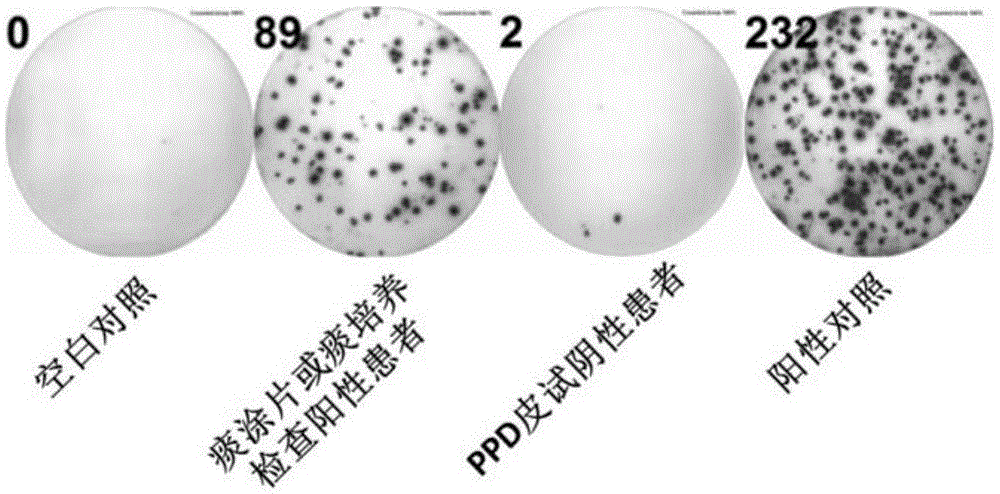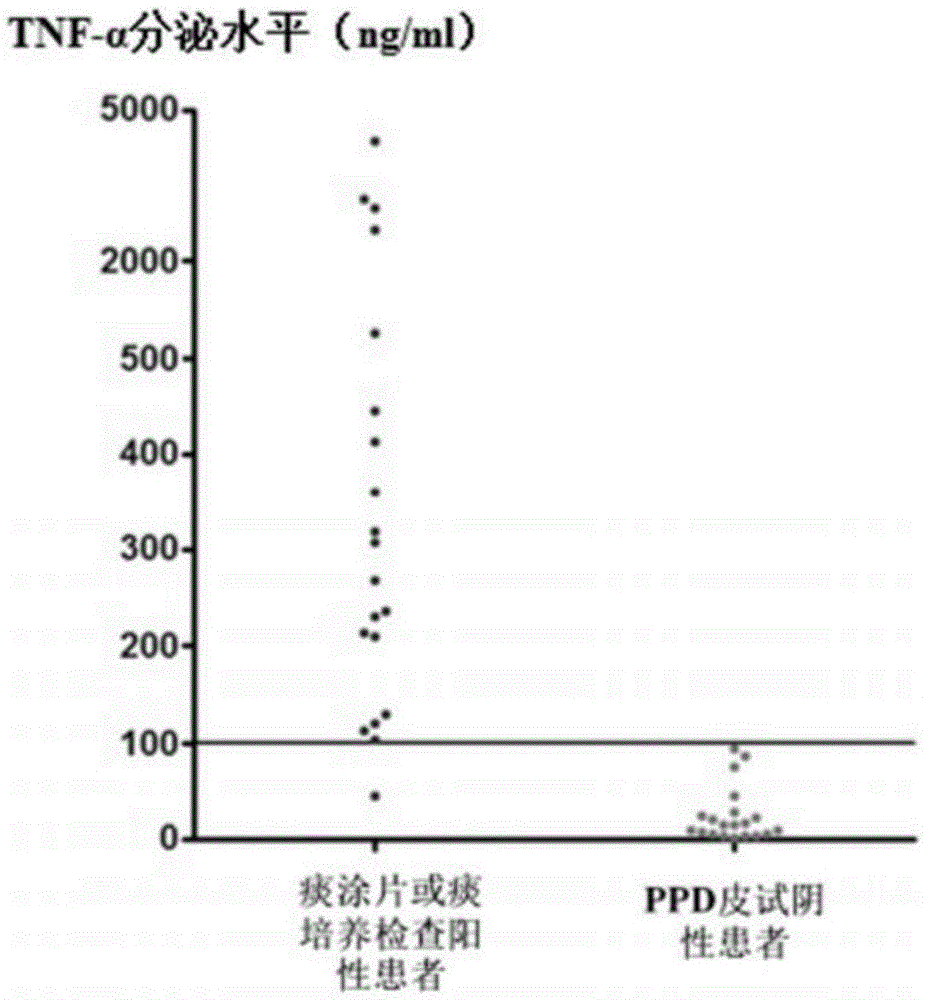Mixed polypeptide for producing tuberculosis associated cell factors by inducing peripheral blood mononuclear cell
A technology of cytokines and peripheral blood, applied in the field of protein detection, can solve the problem of low specificity of PPD, and achieve the effect of strong sensitivity, high specificity and good stimulation effect
- Summary
- Abstract
- Description
- Claims
- Application Information
AI Technical Summary
Problems solved by technology
Method used
Image
Examples
Embodiment 1
[0059] Example 1. Epitope Analysis and Polypeptide Synthesis of Specific Mixed Polypeptides
[0060] Referring to the GenBank database, using bioinformatics technology to analyze and predict antigenic epitopes, a mixed polypeptide (SEQ ID NO: 1-18) is selected, each polypeptide contains 20-25 amino acids, and there are 8-25 amino acids between adjacent two polypeptides. 10 amino acid repeats. There is no rigid regulation on the mixing ratio. Preferably, the 18 polypeptides are mixed with equal mass.
[0061] The amino acid sequence is further obtained according to the calculation: wherein the mixed polypeptide SEQIDNO: 1-18 is coded by the nucleotide sequence SEQIDNO: 19-36 respectively. Polypeptide solid-phase synthesis (SPPS) was used to generate the desired polypeptide according to the instructions of the synthesizer, and the product was freeze-dried for future use.
Embodiment 2
[0062] Example 2. Separation of human peripheral blood mononuclear cells (PBMC) by density gradient centrifugation
[0063] Use fresh heparin lithium or heparin sodium blood collection tubes or vacuum blood collection tubes to aseptically extract 4ml of peripheral venous blood from the person to be tested, and invert the blood to mix the anticoagulant and blood. Prepare two 15ml centrifuge tubes, and add physiological saline for injection and lymphocyte separation solution equal to the volume of blood collection respectively. After mixing the fresh heparin anticoagulated blood with normal saline, slowly add it into the separation liquid at a uniform speed, and centrifuge at 1800g for 20min at 22°C. After centrifugation, PBMC cells can be seen to exist in the cloud-like layer. Aspirate the PBMC cell layer into a new 15ml centrifuge tube, make up to 12ml with RPMI-1640 culture medium, and centrifuge at 22°C and 600g for 10min. Pour off the supernatant, make up to 5ml with RPMI-...
Embodiment 3
[0065] Example 3. Mixed polypeptides induce human peripheral blood mononuclear cells to secrete IL-2 levels
[0066] The heparin sodium anticoagulated peripheral venous blood samples of 20 patients with positive sputum smear or sputum culture test and 20 patients with negative PPD skin test were respectively selected, and PBMC were separated by density stratification, and diluted with serum-free medium after cell counting. to 2.5×10 6 cells / ml, the cells were inoculated into 96-well plates for culture, and each well was inoculated with 2.5×10 5 For each cell, three detection wells were set up for each sample, which were blank control wells (add 50 μl serum-free medium), experimental wells (add 50 μl mixed polypeptide with a concentration of 2 μg / ml, and use serum-free medium for dilution) and positive wells. Control wells (add 50 μl phytohemagglutinin PHA), 37°C, 5% CO 2 Conditioned incubation for 18-24 hours. After incubation, the culture supernatant of each well was colle...
PUM
 Login to View More
Login to View More Abstract
Description
Claims
Application Information
 Login to View More
Login to View More - R&D
- Intellectual Property
- Life Sciences
- Materials
- Tech Scout
- Unparalleled Data Quality
- Higher Quality Content
- 60% Fewer Hallucinations
Browse by: Latest US Patents, China's latest patents, Technical Efficacy Thesaurus, Application Domain, Technology Topic, Popular Technical Reports.
© 2025 PatSnap. All rights reserved.Legal|Privacy policy|Modern Slavery Act Transparency Statement|Sitemap|About US| Contact US: help@patsnap.com



